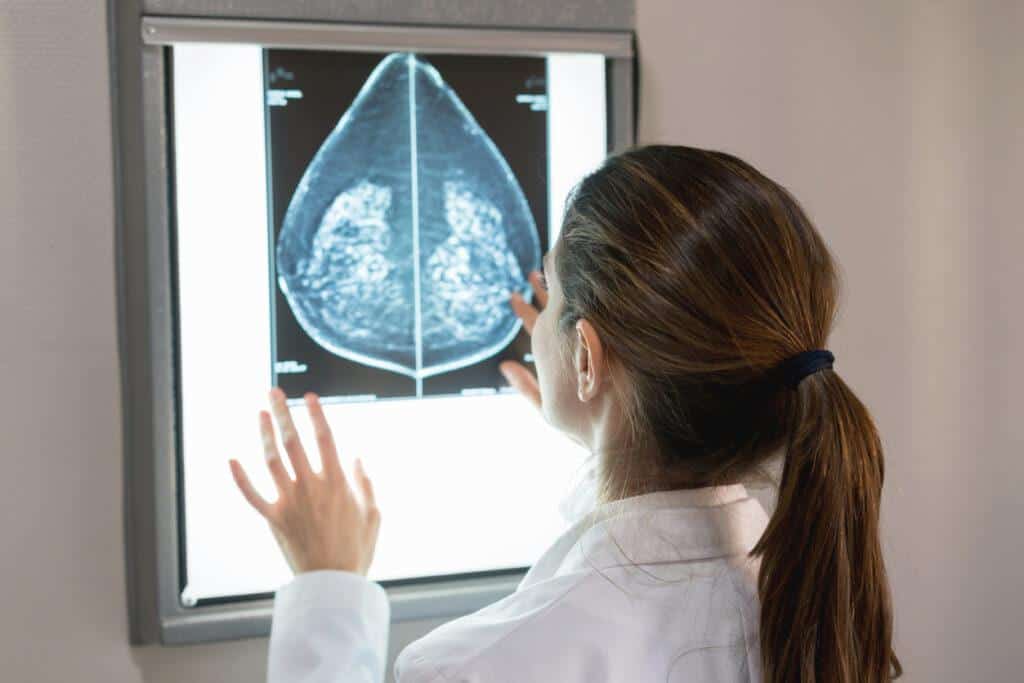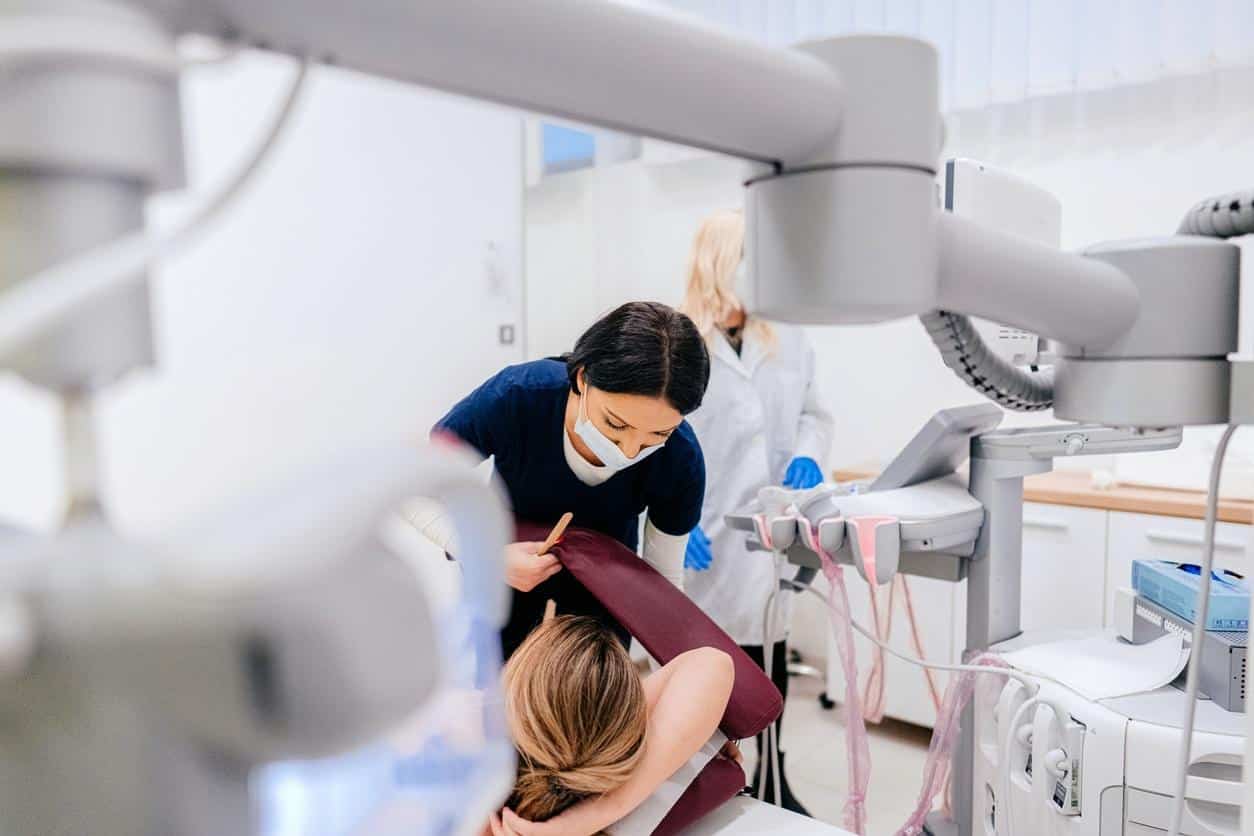When we talk about cancer screening, one common question people ask is, “How can you find out if you’re at risk for cancer?” Fortunately, risk assessment tools help determine who qualifies for supplemental screening and genetic counseling or testing. In general, each tool identifies several risk factors that scientists have associated with an increased risk for cancer.
The Tyrer-Cuzick Model
The Tyrer-Cuzick model is a risk assessment tool that measures a person’s probability of BRCA1 or BRCA2 mutations. By measuring these mutations, the tool estimates the likelihood of a woman developing breast cancer in 10 years or over their lifetime.
Usually, if the model, also called the IBIS risk tool, predicts a 10% or higher chance of mutations, it’s advisable to visit a doctor for genetic counseling or testing. While there are other risk models, the Tyrer-Cuzick model has been proven to be the most consistent in predicting the risk of developing breast cancer. Other models include the Gail model and the BRCAPRO.
Gail Model
The Gail model was developed in 1989 and has since been used as a risk assessment tool for breast cancer. However, over time, the Gail model proved to be less helpful in predicting breast cancer among women with a family history. Consequently, it underestimates the risk of breast cancer for women with the hereditary syndrome.
This risk assessment tool uses family history, medical history, and reproductive history. Another downside of the Gail prediction model is that it did not account for racial differences and a range of other confirmed breast conditions.
Fortunately, the Gail model was later improved to be more inclusive and accurate for other races besides white women. However, the model proved to be more accurate for predictions among women with regular mammograms than those without mammograms.
BRCAPRO
The BRCAPRO model predicts the probability of a person carrying the BRCA1 and BRCA2 mutations or both. The model checks for these mutations based on another person’s cancer status, especially ovarian and breast cancer history among relatives. Usually, first and second-degree relatives are considered.
BRCAPRO model is essential for determining if a patient should undergo genetic testing. The testing is essential for women that are BRCA carriers. If the model shows that the probability of being a carrier is low, the tests will likely show negative results. However, if the model predicts that the likelihood of being a BRCA carrier is high, the genetic testing results may show a high risk for breast cancer.
Usually, a clinician may recommend lifestyle changes if you are a BRCA carrier to help avoid breast cancer.
What Factors Does The Tyrer-Cuzick Model Consider?
As earlier mentioned, a model works on several factors to make predictions. Usually, the testing considers factors such as:
- -Age
- -Age at menopause
- -Body mass index
- -History of breast conditions such as hyperplasia or LCIS
- -Obstetrics
- -History of conditions such as ovarian cancer
- -History of hormone replacement therapy
- -Family history of breast cancer, breast conditions, or ovarian cancer

The Efficiency of The Tyrer-Cuzick Model
The Gail model is a risk assessment tool that measures the risk of developing breast cancer in the next five years. As such, the model is considered a short-term screening model. It determines if a woman should go for further testing beyond a mammogram.
However, long-term risk assessment tools are crucial because they help doctors and patients consider preventative strategies such as taking medication, breast removal surgery, or ovary removal. Most women that take yearly mammogram may often ask, “How is the accuracy of the Tyrer-Cuzick model assessed?”
The researchers analyzed the records of 132,139 women who were determined to be at risk using the Tyrer-Cuzick model. None of the women in the study had previously been diagnosed with breast cancer but had regular breast cancer screening. The age distribution was 43 years to 73 years. Overall, the participants had a median follow-up time of 5.2 years, but 10.8 years for women under 60 years.
Initially, the Tyrer-Cuzick model had predicted 2,554 women were at high risk of developing breast cancer. Overall, 2,699 women were diagnosed with invasive breast cancer. The Tyrer-Cuzick model also predicted the 4,654 women would develop breast cancer based on their breast density. Of these, 147 were diagnosed with invasive cancer.
What Happens During an Analysis?
The Tyrer-Cuzick model analyses several factors to determine the risk of a woman developing breast cancer. The analysis is added to the patient’s mammogram report. The percentage risk then determines the screening, follow-up, and preventative strategies a patient should consider.
Average Risk
Average risk is below 15%. Usually, annual mammograms are recommended in this case. Also, for women with high breast density, screening with tomosynthesis is highly recommended.
Intermediate Risk
Intermediate risk is between 15%-19%. If you fall under this category, supplemental screening is essential. Also, screening is critical for women with high breast density. Breast MRIs and ultrasound may be recommended for patients in this category.
High Risk
High risk is greater than 20%. For patients in this group, annual screening MRIs and mammograms are recommended. Screening is recommended whether or not the patient has high breast density. For patients that cannot access MRIs, routine mammography and ultrasounds are recommended.
Can You Estimate Your Personal Risk For Breast Cancer?
If you are unaware of your risk for breast cancer, it’s best to talk to your doctor. However, if you have undergone testing and determined that you are at intermediate or high risk, it’s crucial to schedule a regular screening.
Generally, it is recommended that you do the following:
- -Self-examinations for breast lumps
- -Examinations with your doctor
- -Mammograms, especially for women above the age of 40
- -Screening MRIs and ultrasounds
- -You should also maintain a healthy lifestyle by maintaining healthy weight, exercising, avoiding drugs and alcohol, and eating a healthy diet.
Get Your Screening Today
Scheduling regular screening is the best way to check for breast cancer and seek early treatment. At Women’s Imaging Specialists, we use the Tyrer-Cuzick scoring model in our screening services. We also offer mammograms and advise you on screening frequency.


